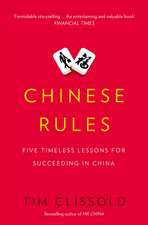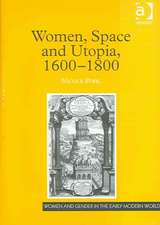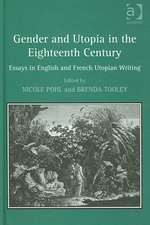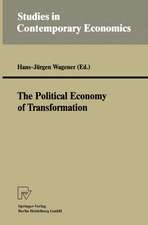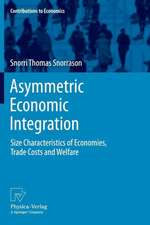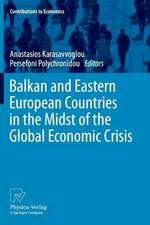Mobility in Space and Time: Challenges to the Theory of International Economics: Contributions to Economics
Autor Nicole Pohlen Limba Engleză Paperback – 27 feb 2001
Din seria Contributions to Economics
- 18%
 Preț: 1001.81 lei
Preț: 1001.81 lei -
 Preț: 90.83 lei
Preț: 90.83 lei - 15%
 Preț: 649.06 lei
Preț: 649.06 lei - 18%
 Preț: 1109.92 lei
Preț: 1109.92 lei - 24%
 Preț: 657.09 lei
Preț: 657.09 lei - 18%
 Preț: 976.54 lei
Preț: 976.54 lei - 17%
 Preț: 361.03 lei
Preț: 361.03 lei - 18%
 Preț: 1027.83 lei
Preț: 1027.83 lei -
 Preț: 283.93 lei
Preț: 283.93 lei - 15%
 Preț: 644.95 lei
Preț: 644.95 lei - 15%
 Preț: 638.24 lei
Preț: 638.24 lei -
 Preț: 394.29 lei
Preț: 394.29 lei - 15%
 Preț: 636.80 lei
Preț: 636.80 lei - 15%
 Preț: 637.78 lei
Preț: 637.78 lei - 18%
 Preț: 723.69 lei
Preț: 723.69 lei - 15%
 Preț: 635.47 lei
Preț: 635.47 lei - 15%
 Preț: 634.00 lei
Preț: 634.00 lei -
 Preț: 392.75 lei
Preț: 392.75 lei -
 Preț: 383.33 lei
Preț: 383.33 lei - 15%
 Preț: 637.28 lei
Preț: 637.28 lei - 15%
 Preț: 636.80 lei
Preț: 636.80 lei - 18%
 Preț: 950.96 lei
Preț: 950.96 lei - 15%
 Preț: 634.68 lei
Preț: 634.68 lei -
 Preț: 387.38 lei
Preț: 387.38 lei - 15%
 Preț: 647.27 lei
Preț: 647.27 lei - 15%
 Preț: 636.63 lei
Preț: 636.63 lei - 15%
 Preț: 639.73 lei
Preț: 639.73 lei - 15%
 Preț: 641.85 lei
Preț: 641.85 lei - 20%
 Preț: 649.60 lei
Preț: 649.60 lei - 15%
 Preț: 641.71 lei
Preț: 641.71 lei -
 Preț: 387.96 lei
Preț: 387.96 lei - 15%
 Preț: 645.47 lei
Preț: 645.47 lei -
 Preț: 385.08 lei
Preț: 385.08 lei - 15%
 Preț: 646.62 lei
Preț: 646.62 lei -
 Preț: 383.33 lei
Preț: 383.33 lei - 15%
 Preț: 638.43 lei
Preț: 638.43 lei -
 Preț: 381.21 lei
Preț: 381.21 lei - 15%
 Preț: 642.51 lei
Preț: 642.51 lei - 15%
 Preț: 637.78 lei
Preț: 637.78 lei - 15%
 Preț: 641.71 lei
Preț: 641.71 lei -
 Preț: 384.70 lei
Preț: 384.70 lei -
 Preț: 379.86 lei
Preț: 379.86 lei -
 Preț: 378.34 lei
Preț: 378.34 lei -
 Preț: 384.70 lei
Preț: 384.70 lei -
 Preț: 388.52 lei
Preț: 388.52 lei - 15%
 Preț: 641.71 lei
Preț: 641.71 lei -
 Preț: 381.00 lei
Preț: 381.00 lei - 15%
 Preț: 644.95 lei
Preț: 644.95 lei -
 Preț: 386.00 lei
Preț: 386.00 lei
Preț: 385.62 lei
Nou
Puncte Express: 578
Preț estimativ în valută:
73.80€ • 80.13$ • 61.99£
73.80€ • 80.13$ • 61.99£
Carte tipărită la comandă
Livrare economică 22 aprilie-06 mai
Preluare comenzi: 021 569.72.76
Specificații
ISBN-13: 9783790813807
ISBN-10: 379081380X
Pagini: 248
Ilustrații: XII, 235 p.
Dimensiuni: 155 x 235 x 13 mm
Greutate: 0.36 kg
Ediția:Softcover reprint of the original 1st ed. 2001
Editura: Physica-Verlag HD
Colecția Physica
Seria Contributions to Economics
Locul publicării:Heidelberg, Germany
ISBN-10: 379081380X
Pagini: 248
Ilustrații: XII, 235 p.
Dimensiuni: 155 x 235 x 13 mm
Greutate: 0.36 kg
Ediția:Softcover reprint of the original 1st ed. 2001
Editura: Physica-Verlag HD
Colecția Physica
Seria Contributions to Economics
Locul publicării:Heidelberg, Germany
Public țintă
ResearchCuprins
1 Introduction: aims and conceptions.- A A concept of mobility in space and time.- 2 Mobility in the 21st century: some empirical observations.- 3 Mobility in space and time – structuring a complex phenomenon.- B Mobility in the theory of international economics.- 4 General possibilities and restrictions of theoretical modelling.- 5 International flows of goods and factors –traditional theory of international economics.- 6 New trade theory and multinational corporations.- 7 Non-linear dynamics and self-organization –New Economic Geography.- C Future agenda – towards a theory of mobility in space and time.- 8 Between old and new concepts.- 9 Economic agents, capabilities and relationships in space and time.- 10 Geography, culture, organization and politics as determinants of distance.- 11 Spaces of multinationalization.- 12 Novelty, capabilities and heterogeneity of agents.- 13 A new understanding of a complex matter – space and time.- 14 A formal model of mobility.- D Between given knowledge and new challenges.- 15 Conclusion.- List of figures.- List of tables.- References.
Textul de pe ultima copertă
The book aims at creating the foundations for a broad framework of a "theory of mobility in space and time". Starting from a confrontation between mainstream international economics and empirical observation, the approach takes into account the heterogeneity of more or less mobile agents, forms of interaction that go beyond price interaction as well as the dimensions of space and time. It is emphasized that only an interdisciplinary approach that is open to new methods will be able to offer explanations for the spatial dynamics of our times. This approach goes beyond the traditional distinction of national versus international transactions. It is a completely new conceptual framework that makes the integration of traditional approaches as well as future theoretical developments possible.


